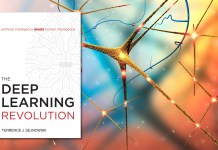By Tarun Eldho
The intersection of AI and cloud computing has become a transformative force in the health technology and dental care sectors. As these technologies mature, their integration is changing healthcare and dentistry, driving innovations in predictive analytics, personalized patient care, and operational efficiency. This shift is not just technological but also fundamentally patient-centered, promising better outcomes, enhanced accessibility, and improved patient experiences.
Predictive Analytics: Shaping Proactive Healthcare and Dental Care
Predictive analytics, powered by AI and cloud platforms, is revolutionizing healthcare and dental care by enabling providers to anticipate and mitigate risks before they become critical issues. Using ML algorithms, health and dental tech companies can analyze vast amounts of data to identify patterns, trends, and anomalies. This capability has been instrumental in the early detection of diseases, resource allocation, and public health management.
For instance, wearable devices like Fitbit and Apple Watch collect continuous health data such as heart rate, activity levels, and sleep patterns. When integrated with cloud-based AI systems, these devices can alert users and healthcare providers to potential health issues, such as atrial fibrillation, well before symptoms manifest. In dentistry, AI-powered imaging tools like Pearl and Denti.AI analyze dental X-rays to predict the onset of cavities, gum disease, or oral cancer, providing dentists with actionable insights for early intervention.
In the realm of pandemic management, AI-driven predictive models hosted on cloud platforms proved critical during COVID-19. Models analyzed data streams from hospitals, labs, and governmental sources to predict infection surges, enabling more effective resource deployment, such as ventilators and ICU beds. Similarly, dental clinics used AI tools to predict patient volume surges and manage appointment scheduling, ensuring patient safety while maintaining operational continuity.
Patient Personalization: A New Era of Tailored Medicine and Dentistry
Personalized care, the tailoring of treatments to individual patients, has advanced significantly with the advent of AI and cloud technologies. The combination enables the analysis of genetic, environmental, and lifestyle data to design bespoke treatment plans, improving outcomes and reducing adverse reactions.
AI-driven genomics, for example, uses cloud infrastructure to process terabytes of genetic data quickly. Companies like Illumina leverage these technologies to offer insights into a patient’s genetic predisposition to diseases like diabetes or cancer. By analyzing genetic markers, AI algorithms can suggest preventive measures or targeted therapies, such as immunotherapies for cancer treatment.
In dental care, AI is enabling customized treatment planning for orthodontics and restorative procedures. Tools like Invisalign’s AI-powered ClinCheck system analyze patient-specific dental scans to create precise aligners, offering a faster and more personalized orthodontic experience. Similarly, cloud-based platforms allow dentists to access real-time 3D scans and treatment models, ensuring that crowns, bridges, and implants are tailored to each patient’s unique oral structure.
Wearable tech and apps are another domain where AI and cloud-based personalization shine. Applications like MyFitnessPal and Omada Health provide tailored fitness and nutrition plans based on user data. In dentistry, apps like Oral-B’s AI toothbrush and Colgate Connect offer personalized brushing recommendations, helping users maintain optimal oral hygiene based on data collected through smart sensors.
Operational Efficiency: Optimizing Healthcare and Dental Systems
The efficiency of healthcare and dental systems is critical to delivering high-quality care, especially in a world of growing populations and limited resources. AI and cloud technologies are helping providers streamline operations, reduce costs, and enhance service delivery.
Hospitals and dental clinics are increasingly adopting AI-powered tools to optimize patient flow. For example, cloud-based platforms can predict patient admission and discharge rates, allowing administrators to allocate resources like beds, staff, and equipment more effectively. Tools like LeanTaaS iQueue use machine learning to optimize scheduling for operating rooms, reducing wait times and maximizing utilization.
Electronic health records, traditionally cumbersome and siloed, are now benefiting from AI and cloud integrations. Platforms like Epic and Cerner utilize cloud computing to centralize data storage, making it accessible across departments and facilities. Similarly, cloud-based dental practice management software is adding more AI and automation features natively, and on-prem software like Dentrix and Eaglesoft integrate cloud and AI technologies to streamline patient record-keeping, billing, and appointment scheduling. This shift is redefining how healthcare and dental practices manage and utilize their data.
Supply chain management in healthcare and dental care is also seeing a transformation. During the COVID-19 pandemic, AI-driven cloud platforms helped forecast shortages of critical supplies like PPE and vaccines. In dentistry, similar technologies enabled clinics to manage inventory for disposable items like gloves, masks, and dental instruments, ensuring uninterrupted care.
Despite the immense promise of AI and cloud technologies in health tech and dental care, challenges remain. Data privacy and security are paramount concerns. The sensitive nature of healthcare and dental data requires robust encryption, access controls, and compliance with regulations like HIPAA and GDPR. Cloud providers are addressing these issues with advanced security measures and dedicated healthcare solutions.
Integration is another hurdle. Many healthcare and dental systems operate on legacy infrastructure, making the transition to cloud-based AI platforms complex. However, hybrid cloud solutions are emerging as a viable bridge, enabling organizations to gradually migrate without disrupting operations. Some cloud providers offer zero-downtime white-glove data migration.
Interoperability between systems is also critical for maximizing the benefits of AI and cloud technologies. Initiatives like Fast Healthcare Interoperability Resources (FHIR) are promoting standardized data exchange, enabling seamless integration across diverse platforms.
AI and cloud technologies are undeniably reshaping the health tech and dental care landscape. Their integration is enabling a shift from reactive to proactive care, from generic to personalized medicine and dentistry, and from fragmented to optimized systems. While challenges persist, the opportunities for innovation and impact are vast. These technologies are also incredibly cost-effective in the long run.
As the health technology and dental sectors continue to harness the power of AI and cloud platforms, the future looks brighter than ever. Patients and dental clients stand to benefit from more accurate diagnoses, tailored treatments, and improved accessibility, while providers gain tools to operate more efficiently and sustainably. Together, these technologies are not just enablers of progress, they are the future of healthcare and dental care.
About the author
Tarun Eldho Alias is a seasoned technology leader with over a decade of experience in software development, currently serving as the founder and Chief Technology Officer at Neem Inc. in Boston, MA. With expertise in enterprise application development and a deep technical background in Java, Spring, cloud platforms, and database technologies, he has successfully built and scaled innovative software solutions, including comprehensive health tech and e-commerce platforms. A passionate problem solver and mentor, Tarun is committed to driving growth, fostering collaboration, and delivering high-impact solutions that align with organizational goals.






















